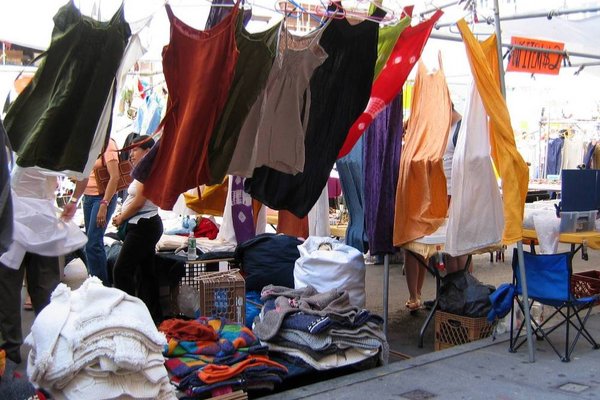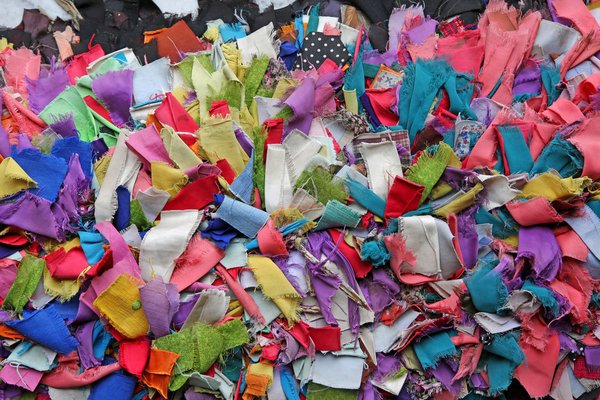Experts of the ‘mixed rags’ market indicate in the United States alone, nearly 10.5 million tons – or nearly 70 pounds per U.S. citizen – of textiles go to waste annually. The reason for this, experts argue, is in large part due to the rise of “fast fashion.” This fashion trend, one that is quite devastating to the sustainability of the local and global environment, allows producers and consumers to generate and use cheaper lower quality grade materials that do not last as long and are disposed at a much higher and faster rate.

One of the key ways to target the rise of ‘fast fashion’ is through an alternative practice: ‘mixed rags.’ This strategy entails that consumers engage in the process of textile recycling – which necessitates that clothing/material was either not sold in a resale, or was not suitable for resale (and would have been made available at thrift store locations or discount apparel stores). Some of the reason why these items might not be suitable for resale include: a sort of imperfection like stains, rips, broken zippers or missing buttons. And so, once these materials are donated to a thrift store or charity and cannot be sold, they are then removed from the storefront, turned over to a textile recycling retailer, sent to a warehouse, sorted and compressed into bales, and stored until they can be re-sold to a new owner. When this happens consumers can expect that they will be dealing in items such as: clothing, shoes, and even household textiles such as linens and towels.
Statistics indicate that mixed rags items have four major usages. First, nearly 45% of ‘mixed rags’ are sold as second-hand clothing to other domestic or overseas markets. These might consist of old clothing which new owners might find use for, or materials that could be used to re-make costumes (for school plays or for the Halloween season). Consumers might also tap into the ‘mixed rags’ market to re-decorate their home with fabrics and crafts that they can transform into table cloths, table runners, pillows, curtains, seat covers, quilts, blankets and various other home decorations.
 The second major use is for industrial markets. Experts indicate that nearly 30% of ‘mixed rags’ make their way to this market. These items might include resources such as wiping rags for the automotive, home improvement and manufacturing industries. In these cases, it is not necessarily important that the material is of low value given that its use will be to clean up waste material. The third option that ‘mixed rags’ is usually funnelled into is shredding materials. In this case ‘mixed rags’ are transformed into fibre for materials such as couches and chairs, carpet padding, home insulation, blankets, tablet and phone cases. Yet again, much of this ‘mixed rags’ material is largely utilized for the home, and experts estimates that shredding materials make up nearly 20% of the ‘mixed rags’ share. Finally, 5% of mixed rag materials are often discarded due to the materials being compromised, and therefore deemed unusable due to chemical contamination or water damage.
The second major use is for industrial markets. Experts indicate that nearly 30% of ‘mixed rags’ make their way to this market. These items might include resources such as wiping rags for the automotive, home improvement and manufacturing industries. In these cases, it is not necessarily important that the material is of low value given that its use will be to clean up waste material. The third option that ‘mixed rags’ is usually funnelled into is shredding materials. In this case ‘mixed rags’ are transformed into fibre for materials such as couches and chairs, carpet padding, home insulation, blankets, tablet and phone cases. Yet again, much of this ‘mixed rags’ material is largely utilized for the home, and experts estimates that shredding materials make up nearly 20% of the ‘mixed rags’ share. Finally, 5% of mixed rag materials are often discarded due to the materials being compromised, and therefore deemed unusable due to chemical contamination or water damage.
At Bank & Vogue we play an important role in achieving sustainability by contributing towards the ‘mixed rags’ market. This contribution has enabled our organization to save approximately four billion pounds of used clothing from being trashed into landfills per year, and as a result, ethically address our present-day environmental crisis (the ‘crisis of stuff’). To learn more about how we go about participating in the mixed rags market, and to learn more about our details on shipping and logistics, please contact our team at 1-866-613-0719 (North America) or 1-613-747-8465 (International).







